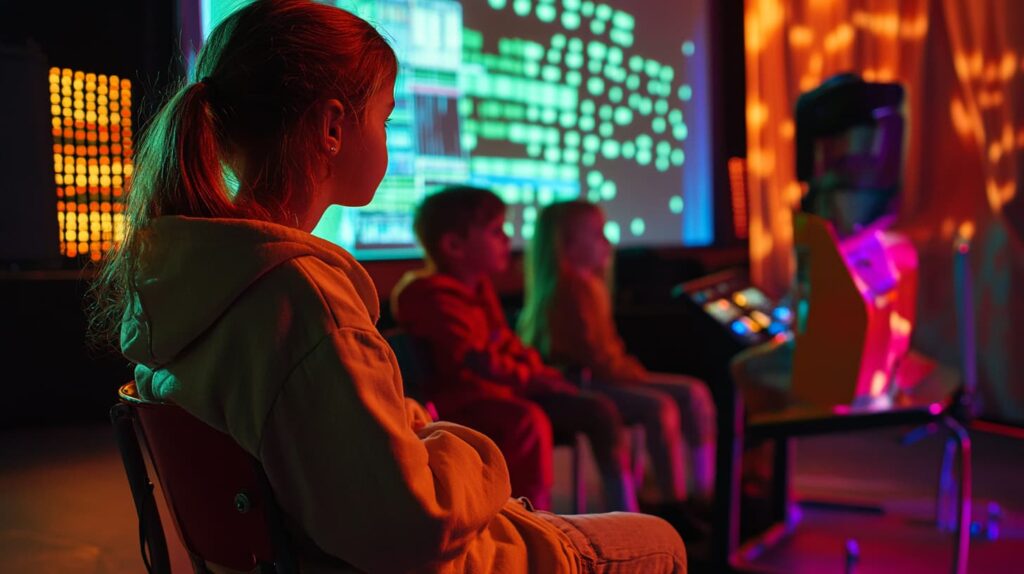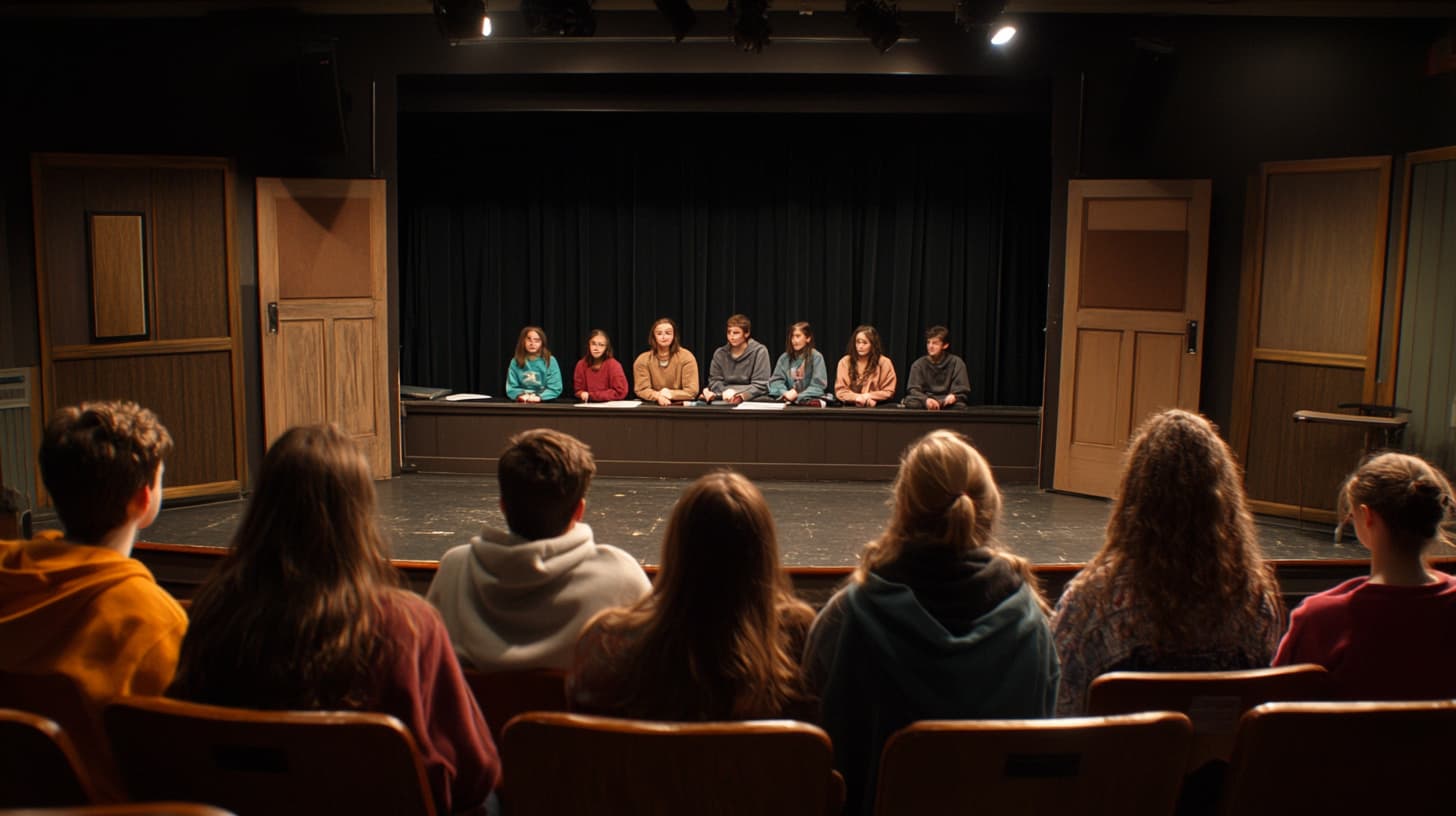Revolutionizing Theater Education Through Innovative Technology
The quiet hum of a theater space has evolved into a symphony of digital possibilities. In a recent student production of “A Midsummer Night’s Dream,” young performers seamlessly interacted with projected fairy worlds while remote audience members experienced the magic through virtual reality headsets. This transformation exemplifies the extraordinary evolution of theater education in the digital age, where traditional stage boards meet cutting-edge technology.
The landscape of theater education has undergone a remarkable metamorphosis over the past decade, accelerated by global shifts in teaching methodologies. The integration of innovative technology into dramatic arts instruction has become not merely an addition but a fundamental component of comprehensive theater training. Modern theater educators find themselves at the intersection of classical technique and digital innovation, where centuries-old performance traditions blend with emerging technologies to create unprecedented learning opportunities.
The New Face of Theater Classrooms
The modern theater classroom bears little resemblance to its historical counterpart. Interactive whiteboards have replaced traditional chalkboards, transforming blocking diagrams into dynamic, manipulatable visualizations. Students now access vast libraries of theatrical resources through sophisticated learning management systems, while cloud-based platforms enable instantaneous sharing of scripts, performance videos, and production notes.

Consider the case of Riverside Theater Academy, where the implementation of a comprehensive digital learning platform resulted in a 40% increase in student engagement. Their hybrid approach combines traditional rehearsal techniques with digital tools, allowing students to analyze scripts through collaborative annotation software and explore character development through virtual reality scenarios. This integration demonstrates how technology can enhance rather than replace traditional theatrical training methods.
Accessibility and Inclusion
Modern theater technology has become a powerful tool for creating more inclusive educational environments. Assistive technologies now enable students with various disabilities to participate fully in theatrical productions. Caption systems, audio description tools, and adaptive control interfaces ensure that technical theater training is accessible to all students. Virtual reality platforms have proven particularly valuable for students with mobility challenges, allowing them to explore stage movements and blocking through alternative means.
Interactive Learning Environments
The conception of theater space has expanded beyond physical boundaries through immersive technologies. Virtual reality applications now enable students to step into historically accurate reconstructions of Globe Theatre performances or experiment with different staging configurations before physical construction begins. Augmented reality tools overlay blocking patterns onto actual performance spaces, helping students visualize movement and spatial relationships with unprecedented clarity.
Remote collaboration tools have transformed the rehearsal process, breaking down geographical barriers and creating global learning opportunities. Students can now participate in master classes with international theater professionals, engage in cross-cultural theater exchanges, and collaborate on multinational productions. These virtual connections expose young performers to diverse theatrical traditions and perspectives, enriching their artistic development.
Technical Theater’s Digital Renaissance
The technical aspects of theater production have experienced perhaps the most dramatic transformation. Modern production management systems have revolutionized the coordination of complex theatrical elements. Digital calling systems integrate with automated lighting and sound cues, while cloud-based production calendars ensure seamless communication among all production team members.
Today’s lighting designers work with sophisticated LED systems and intelligent fixtures that can be programmed and adjusted with unprecedented precision. Digital sound design platforms enable the creation of immersive audio landscapes, while spatial sound systems transform the audience experience. The integration of projection mapping technology has opened new possibilities for scenic design, allowing for dynamic, responsive environments that interact with performers in real-time.
Digital Performance Assessment
The integration of technology has transformed how student progress is evaluated in theater education. Digital portfolios now capture not only final performances but also the entire creative process. Motion capture technology provides detailed analysis of movement and gesture, while voice recognition software offers objective feedback on vocal techniques. These tools enable more precise and comprehensive assessment of student development while maintaining the artistic integrity of the learning process.
Cross-Disciplinary Integration
Theater technology education increasingly intersects with other academic disciplines, creating rich learning opportunities. Students engage with physics principles while studying lighting design, explore mathematics through set construction software, and apply computer science concepts in show control systems. This interdisciplinary approach not only enhances learning but also prepares students for the increasingly technical demands of professional theater.
Implementation Strategies
The successful integration of technology in theater education requires thoughtful planning and execution. Educational institutions must balance the excitement of new technologies with practical considerations of budget, training, and educational objectives. A systematic approach to technology integration begins with comprehensive needs assessment, followed by carefully phased implementation that allows for adjustment and refinement.
Professional development plays a crucial role in this transformation. Theater educators must continually update their skills to effectively utilize new technologies while maintaining the core principles of theatrical training. This ongoing learning process creates a dynamic educational environment where traditional theatrical wisdom meets technological innovation.
Impact on Student Learning
The integration of technology in theater education has yielded measurable benefits in student learning outcomes. Digital documentation tools enable detailed tracking of student progress, while performance analysis software provides immediate feedback on vocal projection, movement, and timing. Students develop not only traditional performance skills but also digital literacy and technical competencies that prepare them for modern theatrical careers.
The Future of Theater Education
Looking ahead, the horizon of theater education continues to expand with emerging technologies. Artificial intelligence applications show promise in script analysis and character development, while blockchain technology may revolutionize rights management and digital performance distribution. The challenge lies in maintaining the delicate balance between technological innovation and the human essence of theatrical expression.
The future of theater education rests in the harmonious integration of digital tools with traditional theatrical training. As technology continues to evolve, the focus must remain on enhancing rather than replacing the fundamental elements that make theater a uniquely human art form. The digital revolution in theater education opens new possibilities for creativity, collaboration, and artistic expression, ensuring that the next generation of theater artists is prepared for both traditional and emerging performance platforms.
